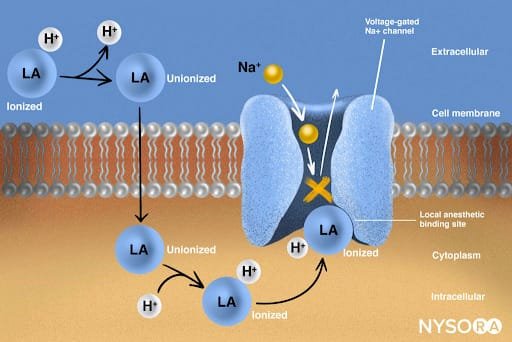Adrenaline is frequently used in anesthesia, particularly the regional type. The Adrenaline Mechanism in anesthesia to increase the duration of the block can be easily understood. The adrenaline is usually added to increase the duration of the regional anesthesia or the nerve block.

It is frequently used in brachial plexus blocks like the Supraclavicular block and the Interscalene block. Adrenaline Mechanism in blocks is the vasoconstriction and thus delayed alsorbtion of the local anesthetic from the site of injection.However, it is never used in giving spinal anesthesia or any other type of central neural axis block.
The Adrenaline Mechanism in prolonging the nerve block is that adrenaline being a potent vasoconstrictor, it decreases the systemic absorption of the local anesthetic drug, thus increasing the availability at the site of injection and increasing the duration of the bock.
Adrenaline also decreases the toxicity of the local anesthetic. The Adrenaline Mechanism in decreasing the toxic dose is again because of its vasoconstrictor property. By decreasing the absorption of the drug into the circulation, the toxic doses of local anesthetics like lignocaine can be doubled.
It is used in a concentration of 1 in 2,00,0 (1 in 2 lakhs). Duration of both sensory motor blockade is increased by addition of epinephrine to lignocaine but only sensory block is prolonged if epinephrine is added to bupivacaine with no effect on motor blockade. The Adrenaline Mechanism with bupivacaine is thus little different from that with lignocaine.
Xylocaine with adrenaline should not be used for:
- Ring block of fingers, toes, penis, pinna (absolute contraindication).
- When an inhalational agent especially halothane which sensitizes myocardium to adrenaline is used.
- Myocardial ischemia patients.
- Hyperthyroid patient.
- Severe hypertensives.
- Intravenous regional anaesthesia (Beir’s block).



Hi, Richard here, just wanted to tell you that this blog is absolutely fantastic! You have lots of great information and inspiration, both of which we all need! Good work, Richard